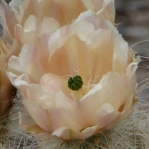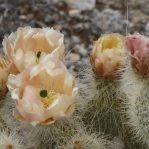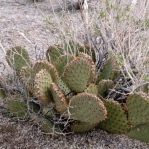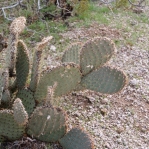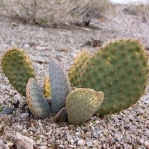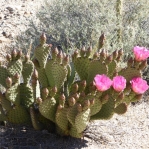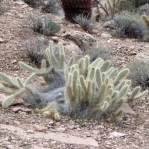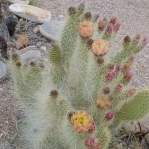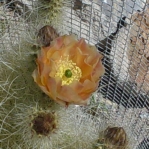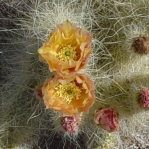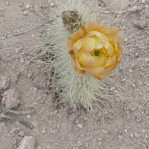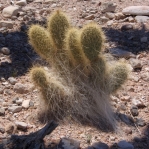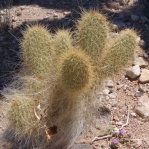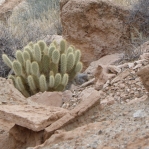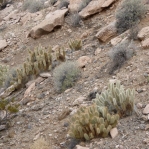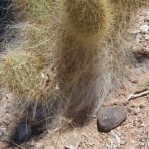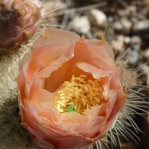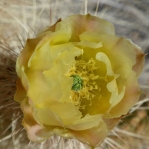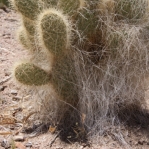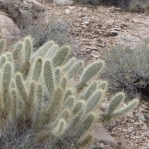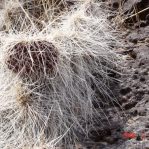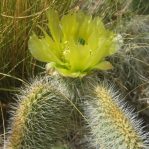
Stock, Hussey, and Beckstrom, Cactus and Succulent Journal (U.S.) 86(2): 35, 2014
Herbarium; Herbarium; Herbarium; Herbarium; Herbarium; Herbarium
Similar to Opuntia trichophora
Original Description
What is Opuntia diploursina?
Opuntia diploursina was described from near Meadview, AZ. It has a limited range. It has similarities with O. polyacantha erinacea and O. trichophora. There is anecdotal evidence that it in Utah on the Mormon Mesa region and westward to the Moapa.
Details
O. diploursina grows to (15)20-45 cm tall with upright branches of 1-4(6) cladodes. Cladodes are narrowly obovate to elliptic, 9-14 cm long, and (4)6-9 cm wide. As in O. polyacantha erinaceae and O. trichophora, the areoles are many and close together. Often there is one major spine per areole, especially in the second year. Spines are straw-colored or yellow-tan and flexible, 2-10 cm long. There are many minor spines appressed to the cladode surface and crossing over other areoles. Overall, the plant is very shaggy with its numerous long spines.
The yellow flowers are 6-7 cm long, but some have a peach-colored cast to them due to a pinkish blush on many tepals. The style is white and the stigma is green. Filaments are white. Fruit is dry. There may be about 10-15 spines in each fruit areole–10 mm long or longer. The fruit is many-seeded. At 9-10 mm in diameter, seeds are large, and they have pronounced rims.
O. diploursina is diploid.
Other Notes
A major and important difference between O. polyacantha erinaceae and O. diplourisna is polidy. The former is tetraploid whereas the latter is diploid as is O. trichophora.
O. diplourina is related to O. trichophora. O. diplourisna differs from O. trichophora in being more upright, the presence of more minor spines that are more closely appressed to the cladode surface, and more and more flexible spines on the fruit.
The original authors speculated that O. diploursina represents an ancient diploid ancestor of O. polyacantha erinacea, but evidence is absent. Hybrids between this Opuntia and O. basilaris and have been reported.
Permission to reproduce the original description was provided by the Cactus and Succulent Society Journal.

